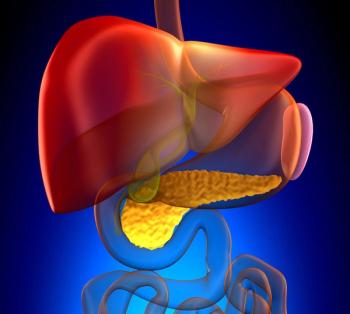
Oncology NEWS International
- Oncology NEWS International Vol 11 No 9
- Volume 11
- Issue 9
Preemptive Pain Treatment Reduces Postsurgical Pain
NEW YORK-Pain treatment before surgery can minimize pain after surgery, may reduce anesthetic need during the procedure, and could minimize the risk of chronic pain conditions developing in the long-term, according to pain expert Mark J. Lema, MD, PhD.
NEW YORKPain treatment before surgery can minimize pain after surgery, may reduce anesthetic need during the procedure, and could minimize the risk of chronic pain conditions developing in the long-term, according to pain expert Mark J. Lema, MD, PhD.
"No one having surgery in America should suffer from distressing pain after a procedureit’s that simple," said Dr. Lema, chairman of the Department of Anesthesiology and Pain Medicine, Roswell Park Cancer Institute, Buffalo. "This does not mean pain wouldn’t occur after surgery, but that distressing, suffering components to the pain should be adequately addressed."
Dr. Lema spoke at an American Medical Association media briefing on pain management, sponsored by an unrestricted educational grant from Purdue Pharma, L.P.
He described two recent randomized studies showing the value of preoperatively initiated thoracic epidural analgesia in reducing long-term post-thoracotomy pain and of preemptive nonsteroidal anti-inflammatory drugs (NSAIDs) in reducing pain after ambulatory arthroscopic knee surgery. Both studies can be found in the January 2002 issue of Anesthesia & Analgesia.
In addition, Dr. Lema said that his group has had "great success" administering COX-2 inhibitors an hour prior to colon resection surgery performed under nonopioid general anesthesia with an epidural catheter delivering an opioid analgesic; these patients required minimal postoperative pain control.
Post-Thoracotomy Pain
In the study of post-thoracotomy pain, from the University of Istanbul, Turkey, 69 patients were randomized to one of three arms: thoracic epidural analgesia (a bupivacaine and morphine solution) initiated preoperatively, that same solution initiated postoperatively, or IV patient-controlled analgesia (PCA) with morphine postoperatively.
The investigators reported that the results with preoperative thoracic epidural analgesia were "the most satisfying" with regard to controlling post-thoracotomy pain acutely and 6 months later, Dr. Lema said (Sentürk M et al: Anesth Analg 94:11-15, 2002).
Incidence and intensity of pain was lowest in the preoperative analgesia group (45%) and most frequent in the IV-PCA group (78%). In addition, the incidence and intensity of chronic pain was lower among the patients who received the preoperative pain control regimen.
In another study, investigators at Baystate Medical Center, Springfield, Massachusetts, reported that administering the COX-2 selective NSAID rofecoxib (Vioxx) before arthroscopic knee surgery resulted in a longer duration of analgesia vs rofecoxib administered after surgical incision (Reuben SS et al: Anesth Analg 94:55-59, 2002).
The study included 60 patients randomized to rofecoxib 50 mg 1 hour before surgery, rofecoxib 50 mg upon completion of surgery, or placebo tablet before surgery. All patients received intraarticular pre- and postsurgical bipuvacaine along with IV sedation.
Additional Hours of Pain Relief
Analgesic duration was 803 minutes in the presurgical rofecoxib group, 461 minutes in the postsurgical rofecoxib group, and 318 minutes for placebo. "Giving the same drug before and after surgery has remarkably different results," Dr. Lema said. "Six additional hours of pain relief were achieved just by giving the same drug before surgery as opposed to after surgery."
In addition, patients who received presurgical rofecoxib used less acetaminophen or oxycodone in the 24 hours after surgery (1.5 pills in the presurgical rofecoxib group vs 3.3 pills in the postsurgical group and 5.5 pills in the placebo group) and had superior pain scores on movement at multiple time points measured. Seven of 20 patients in the pretreatment group did not require opioids vs two of 20 patients in the post-treatment group.
Taken together, these results suggest that anesthetic and pain relief modalities are best started before the surgical incision and continued throughout surgery into the postoperative period, Dr. Lema commented.
"The best approach to pain relief is giving nonopioid agents like COX-2 inhibitors to minimize the amount of opioids needed," he said. "The newer COX-2 selective drugs, with their safer side effects profile, including virtually nonexistent postoperative excessive bleeding and GI irritation, will significantly reduce the amount of opioid needed after surgery, and will also help prevent the development of chronic pain conditions."
Since 1987, cancer specialists at Ros-well Park have been using regional anesthesia techniques in more than 40% of patients, Dr. Lema said. Typically, local anesthetic is started prior to surgical therapy. Recently, in some patients, Dr. Lema and his colleagues have added pretreatment with rofecoxib 50 mg, which comes in an elixir form and can be administered via nasogastric tube and maintained throughout the postoperative period.
Dr. Lema and his colleagues are planning to launch preemptive analgesia studies in urologic and gynecologic patient populations.
Articles in this issue
about 23 years ago
Tumor-Specific Idiotype Vaccines Promising in B-Cell Lymphomasover 23 years ago
Childhood Survivors May Not Know Their Past Rxover 23 years ago
Pemetrexed/Gemcitabine Promising in Advanced Pancreatic Cancerover 23 years ago
Physician Experience Predicts HIV-Related Mortalityover 23 years ago
Eloxatin With 5-FU/LV Approved for Recurrent Colon Cancerover 23 years ago
Comprehensive Geriatric Evaluations Improve Careover 23 years ago
Nordion’s Monte Carlo Dose Calculation Software Approvedover 23 years ago
No Strong Link Between Breast Cancer Risk and Pollutantsover 23 years ago
Imatinib Inactive in Sarcomas That Lack C-KIT/PDGFNewsletter
Stay up to date on recent advances in the multidisciplinary approach to cancer.














































































